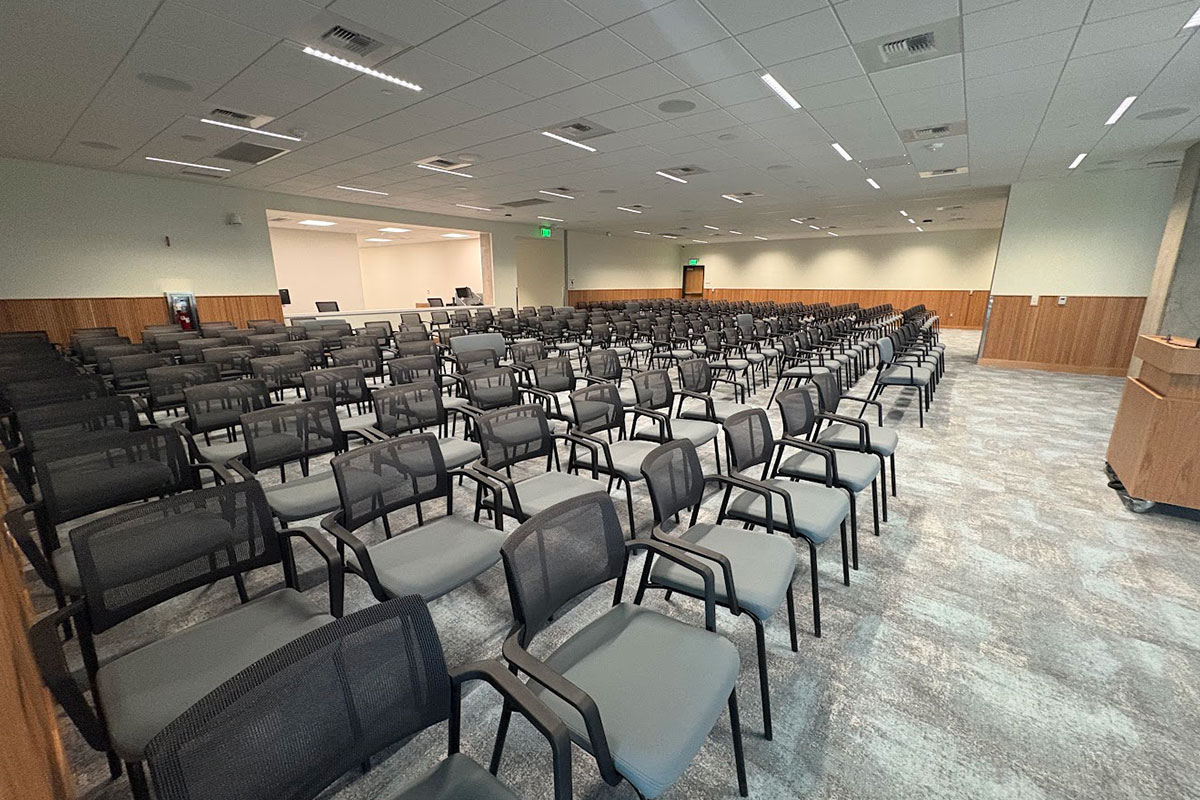Clackamas County residents now have a safer and more secure place to seek justice.
On May 3, local elected officials, dignitaries, members of the criminal justice system, and others attended the ribbon-cutting ceremony for the Clackamas County replacement courthouse project on the Red Soils campus in Oregon City.
Clackamas County Chair Craig Roberts commended the numerous partners who assisted with making the county’s new courthouse a reality. The project saw the State of Oregon commit $139.5 million early on.
“That was essential in funding the early phases of the project,” he said. “I would like to express my gratitude to the State of Oregon for committing those funds. It’s also important to give a well-deserved thanks to everyone involved in this project. This project was successful due to the great partnership between the county and the Oregon Judicial Department and the incredible advocacy of the county’s state legislative delegation to prioritize funding.”
With a price tag of $313 million, the new 257,000 square-foot Clackamas County Courthouse will officially open to the public on May 19.
The new and energy-efficient replacement courthouse is designed to provide significantly more room and security for courthouse staff and visitors, and to serve the community for many decades to come. The new courthouse includes:
- 16 courtrooms
- Jury assembly and grand jury spaces
- 20 judicial chambers
- Safe corridors for courthouse users
- Offices for the district attorney
- Secure holding cells
- Improved prisoner transfer facilities
- New home of the law library
The new courthouse improves safety, as the former courthouse was never designed to have so many courtrooms. Because of that, victims of violence were forced to come into contact in hallways with the same people who committed those crimes.
The new courthouse also creates a more responsive and efficient local justice system, greater measures of safety for victims, and increased accessibility. Another benefit of the new courthouse is its location on the Red Soils campus, placing residents steps away from other important co-located services, such as social services, behavioral health, public health and more.
Clackamas County selected Fengate PCL Progress Partners to design, build, finance, operate, and maintain the replacement courthouse over 30 years. It marks the first time in Oregon history that a courthouse is delivered through a public-private partnership (P3). The county’s comprehensive analyses of alternatives determined that a P3 approach is the most cost-effective, lowest-risk plan. The project did not require any new taxes. The county will make payments of about $15 million annually over 30 years. The monthly payments include maintenance and operations such as, custodial, HVAC system maintenance and replacement, security systems, etc.
This project embodies innovation in construction and environmental sustainability and sets a precedent for future developments within Oregon and beyond. The courthouse project will deliver a modern facility by integrating advanced green technologies, prioritizing security without sacrificing openness, and fostering strong community and statewide support. The courthouse will not only serve the immediate needs of Clackamas County but also showcase the benefits of collaboration, efficiency, and sustainability in public projects.
The new courthouse building and facilities will replace the current courthouse built in 1936 in downtown Oregon City and designed to serve a population of less than 50,000. Clackamas County’s population now exceeds 430,000 and continues to grow.
After a 2015 seismic evaluation, the original courthouse was found to have numerous structural deficiencies. In fact, soil tests indicated the ground under the building could liquefy during an earthquake. The courthouse was also just a few feet from the Willamette River, and it was not financially feasible for the county to seismically retrofit it or modify it to modern standards.
Failing building systems also plagued the original courthouse. Mechanical, electrical and plumbing systems became functionally obsolete, and in some cases, beyond repair.
 Translate
Translate













